-

Brendan Cormier is the lead curator of the Shekou project at the Victoria and Albert Museum in London where he is working to establish a new V&A gallery in Shenzhen, China. Prior to this he was the managing editor of Volume as well as a contributing writer to the several publications including Mark, Domus, Azure, and Canadian Architect on architectural and urban issues. In 2009 he co-founded the research and design studio Department of Unusual Certainties in Toronto, where he designed several exhibition installations that explored urban issues. In 2011 he was named innovator-in-residence at the Design Exchange, Canada's national design museum.
-
There’s a long tradition of architects flirting with the field of design. Early modernists began their careers crafting polemical furniture, while others designed Gesamtkunstwerk-like interiors, from the curtains down to the tableware. Some traces of this tradition still persist, but few have jumped so ambitiously into the world of product design as Zaha Hadid. Her practice has gone so far as setting up a separate company, Zaha Hadid Design (ZHD) to oversee the production of what has become a vast range of objects.
At a glance, these works look typically “Zaha”, replete with amorphous blobs, flowing shapes and shiny surfaces. But while the office has worked hard to establish a theoretical foundation to underpin its architecture, the driving ideas behind ZHD are more elusive. The company insists the designs are not “buildings in miniature”, but they offer few other clues as to how to interpret the works. After exhausting the visual references of H.R. Giger, science fiction films, and the countless organic shapes her work can be compared to, there is not much more a critic can do.
In this sense, a critique of ZHD objects seems self-defeating. More worthwhile, perhaps, is to ask why they are successful. What does the success of ZHD tell us about the world we live in? Some notes then on the world through five ZHD objects. -
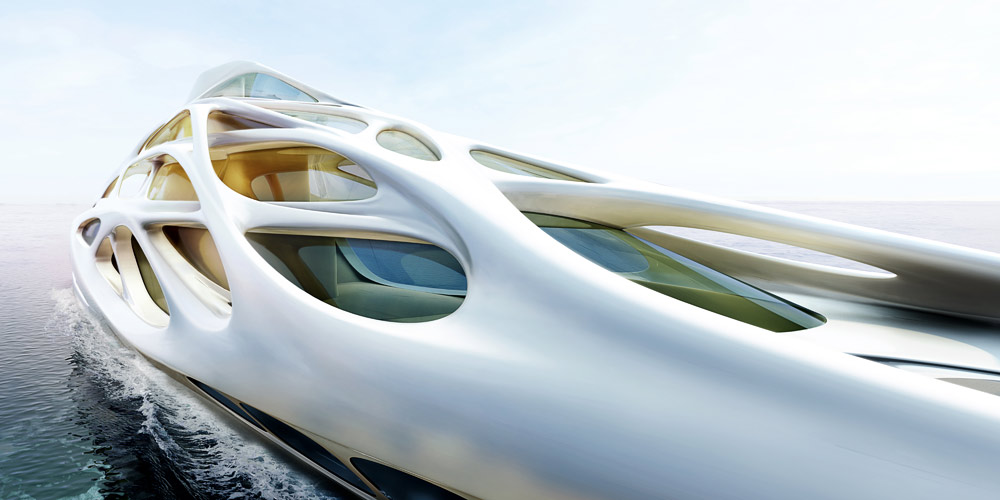
Design for the .01%
Unique Circle Yachts for Blohm+Voss

As we enter a new gilded age of income inequality, the superyacht has emerged as the perfect symbol of excess. Celebrity designers have recently entered the fray, lending the super-valuable boat even more distinction with their designer touch. Norman Foster, Philippe Starck, and Renzo Piano have all designed yachts, but it is ZHA’s Unique Circle Yachts prototype for Blohm+Voss (2013-tbc) that is the most exuberant. Combining metaphors of fluid dynamics and organic structural systems, the boat is wrapped in a sinewy exoskeleton that seemingly explodes from the water. All available for a wildly unattainable price.
The rarefied eccentricity of ZHD design plays well to an ultra-affluent crowd looking for exclusivity and flash. The early modernists dreamed of good design for all. ZHD, like an increasing number of contemporary designers, dream of good design for those with cash.All images and photos courtesy Zaha Hadid Architects
-
Design Complicity
Silk Scarf for Dongdaemun Design Plaza

Zaha Hadid has often come under fire for working with controversial clients and projects. This scarf was designed in 2014 to commemorate another ZHA project, the Dongdaemun Design Plaza in Seoul. The project was heavily criticised because it allegedly necessitated the demolition of an important historic area of the city, whilst consuming large amounts of tax-payers’ money.
Patrik Schumacher has often said that ZHA’s parametric style is a metaphor for our new era of networked complexity. However “networked complicity” might be more apt: a complicity all designers face where the desire for work – and fees – comes into conflict with the moral conundrum of where that money came from.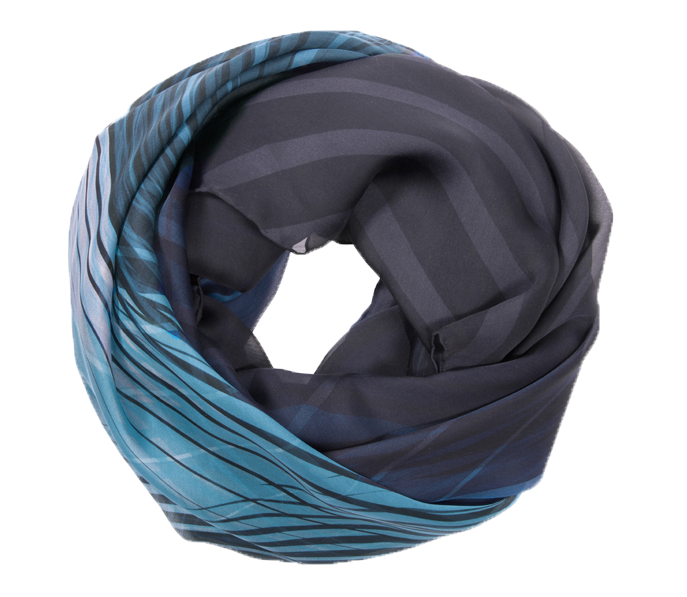
-
The Value of a Brand
Prime Oriental Scented Candle

A signature sells. Most celebrity architects have ridden a wave of success by building an identifiable brand style: think Gehry’s billowing swoops or Libeskind’s jagged crystals. Hadid’s brand is among the strongest, and it’s a testament to this strength that even when transcending different mediums, the signature still holds. Hans Hollein famously claimed that everything is architecture and ZHD do a pretty good job here at showing how even a candle can be given an architectural aura. The Prime Oriental Scented (2014) candle looks like a model of a tower for an oil tycoon. But not everyone is an oil tycoon, and any good brand strategy involves a diversification of price points. Retailing for 69 GBP, the candle represents a relative democratisation of the ZHD brand. Other luxury brands offer perfume as their gateway drug to their other products - here, the scent of the candle lets you dream of higher-up-the food-chain Hadid: shoes, a chair, even your very own building.
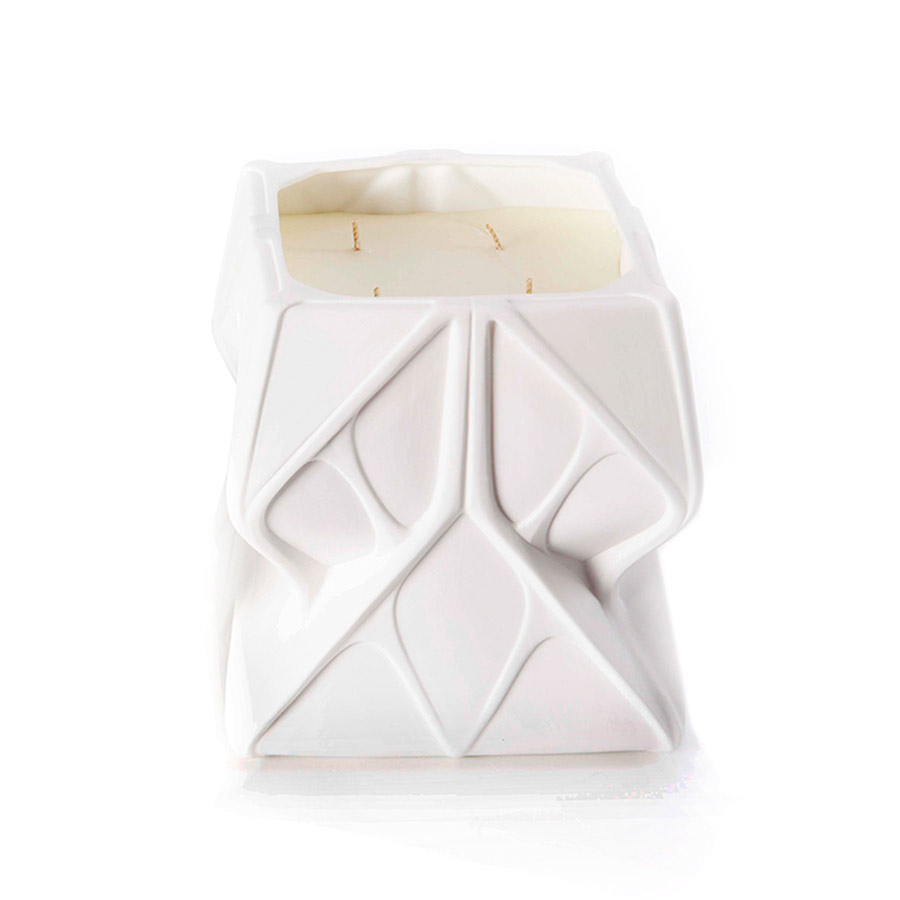
-
Design as Art
Aqua Table

The distinction between art and design has become increasingly blurred. A good example is the Aqua Table, conceived in 2005 as an offshoot of Hadid’s design for the London Olympic Aquatics Centre. Its polyurethane resin prototype broke records in 2005 when it was auctioned in New York for 296,000 US dollars, the most money paid for an object by a living designer at the time. This record, since shattered by the 2.4 million GBP paid for a Marc Newson’s Lockheed Lounge Chair in 2015, is indicative of an increasing trend where design objects are treated like art, boosting their value and the fame of their maker. Several practices, ZHD included, use art world strategies to position their works closer to the aura of an artwork, making limited editions, shown in gallery settings. Indeed ZHD established its own private gallery in Clerkenwell two years ago, as a permanent space to display its works.
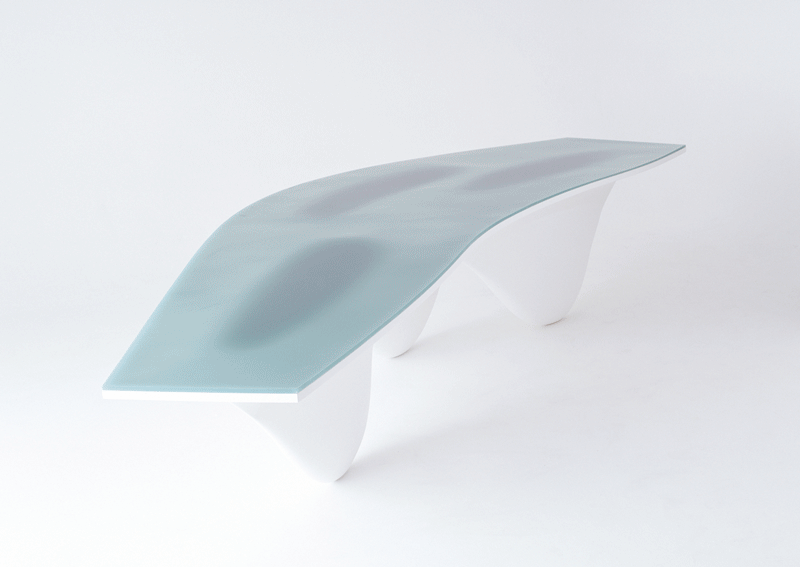
-
Cross-Disciplinary Everything
United Nude Shoe Nova

We live in a world where everyone’s a DJ; that’s to say, whether it be through new digital tools, or a new cultural interest for cross-disciplinary exchange, more people are trying their hand at different mediums, and often with surprisingly good results. We’ve discovered that filmmaker Wes Anderson is a pretty good interior designer, and that artist Ai Weiwei is not a bad architect. Sometimes these collaborations can have pretty radical results, pushing a medium out of a formulaic rut. In the case of shoes, United Nude, have drastically changed our image of what footwear can be, precisely by choosing a strategy of cross-disciplinary fertilisation. For her NOVA shoe (2013), Hadid introduces the architectural concept of a cantilever, a trope in architecture but a radical concept in footwear. The result, combined with characteristic Zaha flourishes, is something incredibly fresh. I
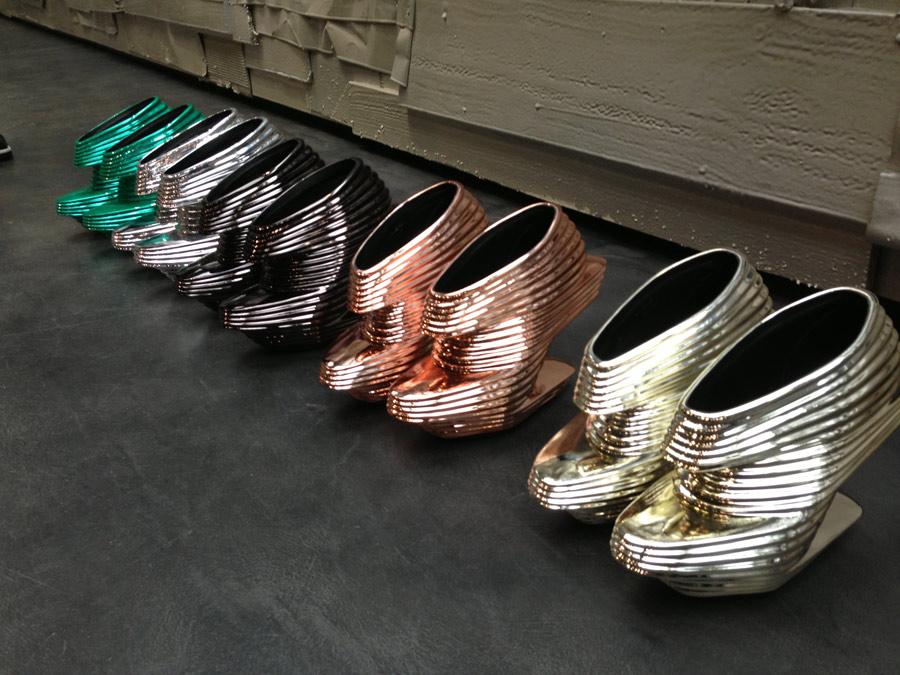
-
Search
-
FIND PRODUCTS
PRODUCT GROUP
- Building Materials
- Building Panels
- Building technology
- Façade
- Fittings
- Heating, Cooling, Ventilation
- Interior
- Roof
- Sanitary facilities
MANUFACTURER
- 3A Composites
- Alape
- Armstrong
- Caparol
- Eternit
- FSB
- Gira
- Hagemeister
- JUNG
- Kaldewei
- Lamberts
- Leicht
- Solarlux
- Steininger Designers
- Stiebel Eltron
- Velux
- Warema
- Wilkhahn
-
Follow Us
Tumblr
New and existing Tumblr users can connect with uncube and share our visual diary.
»Architecture starts when you carefully put two bricks together. There it begins.«
Ludwig Mies van der Rohe
Keyboard Shortcuts
- Supermenu
- Skip Articles
- Turn Pages
- Contents



